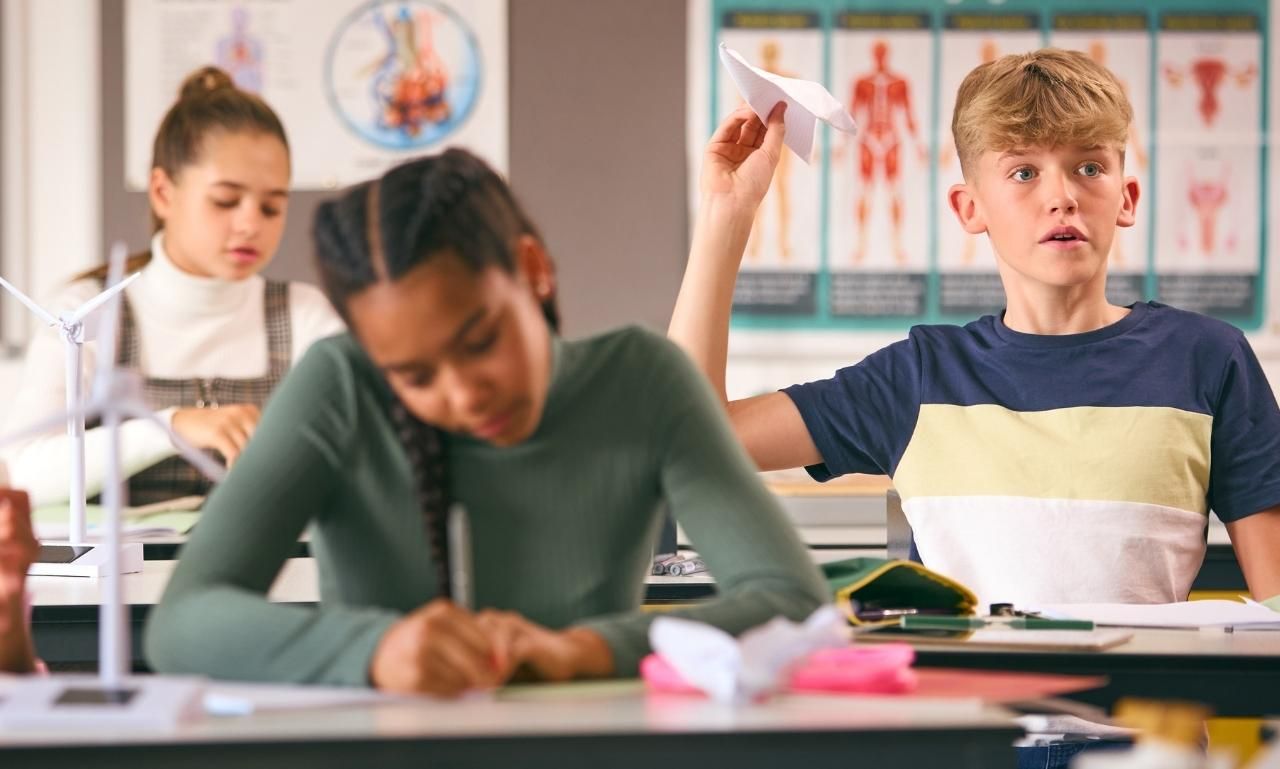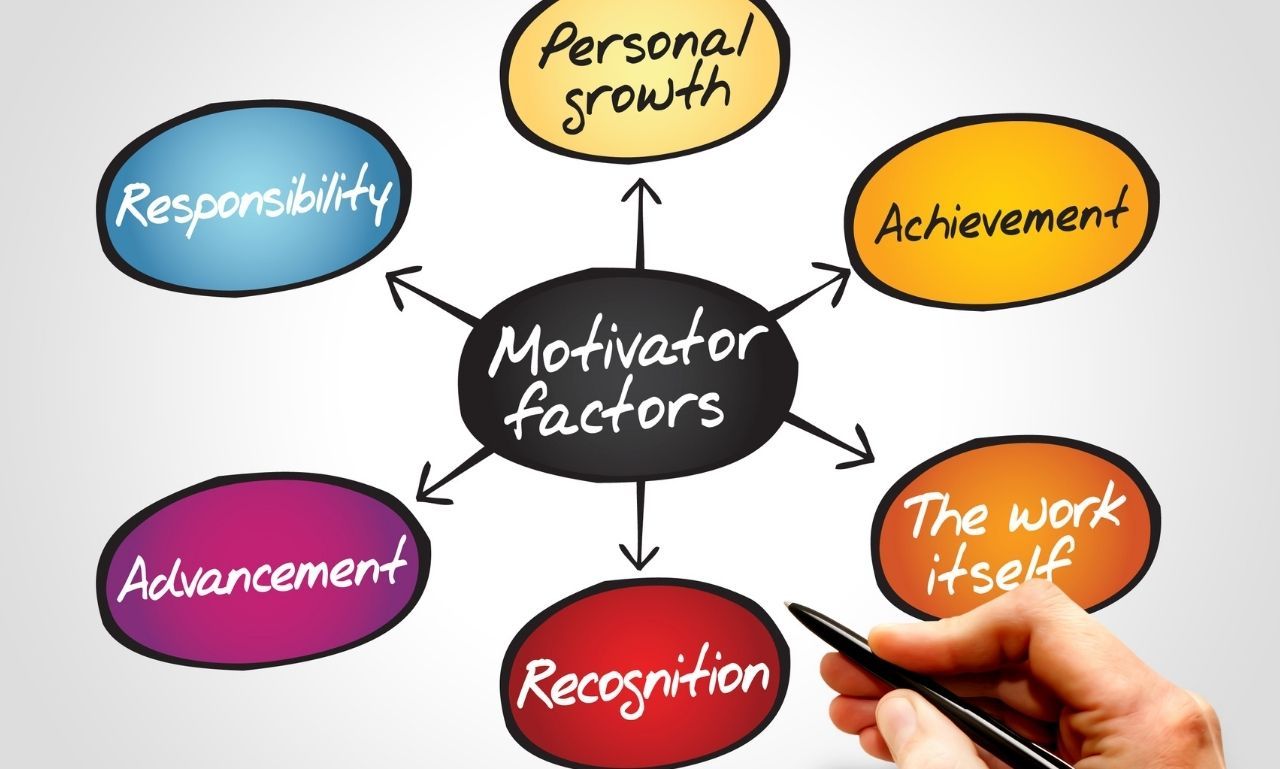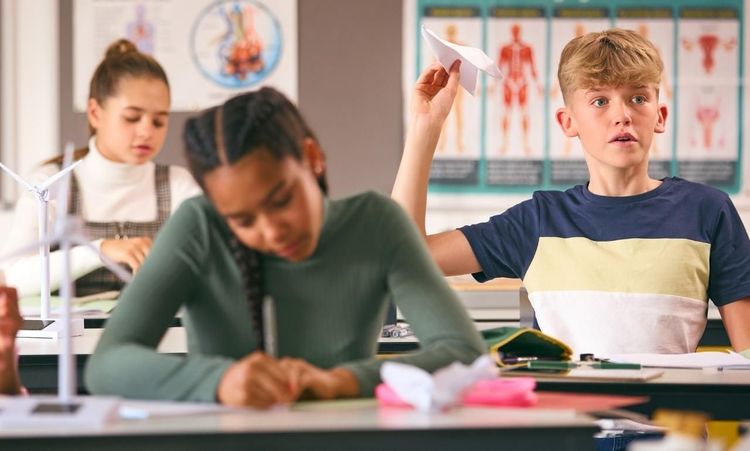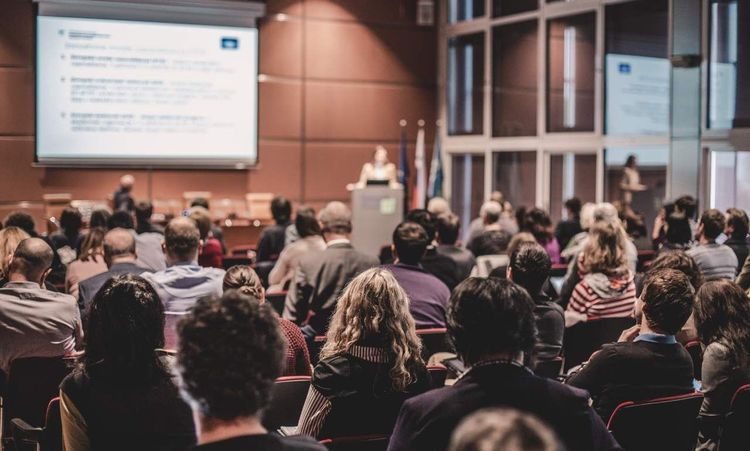Teaching is tough when disruptions take over your classroom. I've been there. You plan an amazing lesson but spend half the time managing behavior issues. This constant struggle drains your energy and passion for teaching. Students miss valuable learning opportunities when class time gets wasted on disruptions. The good news? You can take back control of your classroom. These techniques work across grade levels and subject areas. Implementing these approaches will transform your classroom experience. Let's explore how to reduce disruptions so you can actually teach.
What Causes Classroom Disruptions

Understanding the root causes of disruptions is essential for addressing them effectively. Students often act out when they're bored or don't understand the material. A lack of clear expectations leads to confusion about appropriate behavior. Some students seek attention through disruptive actions. Others may have underlying learning disabilities or emotional issues. Home environments significantly impact how students behave in class. Peer pressure can influence students to act out.
Transitions between activities are common trigger points for disruptions. Physical discomfort from hunger, fatigue, or classroom temperature also affects behavior. Identifying specific causes helps you develop targeted solutions. Each classroom has unique dynamics requiring personalized management approaches.
How to Implement Proactive Classroom Management Strategies
Prevention works better than reaction when managing classroom behavior. Establishing clear rules and procedures from day one sets the foundation. These expectations should be visible in the classroom at all times. Consistency is key to effective classroom management. Students need to know that consequences will follow inappropriate behavior every time. Routines help students understand what to expect during class. They reduce anxiety and create a sense of security. I learned this lesson early in my teaching career. My first class was chaos until I implemented consistent procedures.
Practice transitions between activities to minimize disruption opportunities. Teach students specific behavioral expectations for different activities. Role-play appropriate responses to everyday classroom situations. Proactive strategies save teaching time in the long run.
Foster a Positive Learning Environment
Creating a positive atmosphere makes students want to participate appropriately. Celebrate achievements and progress regularly in your classroom. Use positive language that focuses on desired behaviors rather than problems. The physical arrangement of the classroom significantly affects student behavior. Ensure all students can see instructional areas without straining.
Provide adequate personal space to reduce conflicts between students. Display student work to create ownership of the learning environment. Incorporate elements that reflect student interests and cultural backgrounds. Natural lighting and plants can create a calmer atmosphere. Temperature and ventilation impact student comfort and attention spans. A well-organized classroom reduces confusion and time wasted searching for materials.
The Role of Communication in Minimizing Interruptions
Clear communication prevents many classroom disruptions before they start. Set explicit expectations for when and how students should participate. Use visual cues to signal transitions or expected noise levels. Develop hand signals for common requests to minimize verbal interruptions. Active listening shows students that their voices matter in the classroom.
This substantially reduces attention-seeking disruptions. Address concerns promptly before they escalate into bigger issues. Choose words carefully to avoid provoking defensive reactions. Model respectful communication in all interactions with students. Encourage students to express needs appropriately using "I" statements. Consistent communication styles help students predict and understand your expectations.
Engaging Students with Interactive and Relevant Lessons
Boredom is a leading cause of classroom disruptions. Interested students rarely have time for misbehavior. Connect lesson content to real-world applications and student interests. Vary instructional methods to accommodate different learning preferences. Include hands-on activities that get students physically involved.
Incorporate technology thoughtfully to enhance engagement when appropriate. Provide choices within assignments to increase student ownership. Balance challenging content with attainable success for all students. Break longer lessons into manageable segments with clear transitions. Ask thought-provoking questions that require higher-order thinking skills. Student engagement is your best classroom management tool.
Building Strong Relationships with Students
Students behave better for teachers they respect and trust. Take time to learn about their interests outside of academic subjects. Greet each student by name at the classroom door daily. This simple practice transformed my classroom culture completely. Show genuine interest when students share personal experiences or concerns. Maintain appropriate professional boundaries while being approachable and supportive.
Recognize individual strengths and talents beyond academic performance. Create opportunities for one-on-one conversations with each student regularly. Respond to misbehavior without damaging the teacher-student relationship. Separate the behavior from the student when addressing problems. Strong relationships create intrinsic motivation to meet your expectations.
Collaborating with Parents and Colleagues

Parent partnerships strengthen your classroom management effectiveness. Contact parents with positive news, not just problems. Establish communication channels that work for diverse family situations. Share your classroom management approach with parents early on. Colleague collaboration provides fresh perspectives on challenging situations. Observe teachers who manage their classrooms effectively. Implement regular check-ins with special education staff about specific students. Coordinate approaches with other teachers who work with your students. School counselors can provide valuable insights about student behavior. Administrators should support consistent school-wide management approaches. Team efforts create unified expectations across different learning environments.
Incorporating Student Feedback for Continuous Improvement
Students offer valuable insights about classroom management effectiveness. Anonymous surveys help identify problems you might not notice. Class meetings provide forums for discussing concerns constructively. Students often suggest creative solutions to recurring problems. Regularly ask what's working well and what needs adjustment.
This approach demonstrates that you value student perspectives. Implement reasonable suggestions to increase student buy-in. Explain when suggestions can't be implemented and why. Student input creates shared ownership of the classroom environment. This ownership naturally reduces disruptive behaviors. Continuous improvement requires ongoing feedback from all stakeholders.
How to Utilize Technology to Manage Disruptions
Technology offers innovative tools for classroom management. Digital timers help students manage transitions more independently. Noise level monitors provide visual feedback about classroom volume. Apps can track and reward positive behaviors objectively. Learning management systems streamline materials distribution and submission. This reduces transition time and associated disruptions. Screen monitoring software helps maintain focus during technology-based lessons.
Digital exit tickets provide immediate feedback about lesson effectiveness. Remember that technology should support management, not replace relationships. Balance technology use with personal connections in the classroom. Carefully evaluate whether technology tools actually reduce disruptions effectively.
Recognize and Address Different Learning Styles
Students act out when learning approaches don't match their needs. Visual learners need charts, diagrams, and demonstrations to stay engaged. Auditory learners benefit from discussions, music, and verbal instructions. Kinesthetic learners require movement and hands-on activities regularly. Offer multimodal instruction to reach all students simultaneously. Provide options for demonstrating knowledge beyond traditional assessments. Some students need extra processing time before responding. Others require movement breaks to maintain focus effectively. Learning style accommodations prevent frustration-based disruptions. Flexibility in instruction shows respect for diverse learning needs. This respect cultivates a more positive classroom atmosphere.
Develop Consistent Consequences for Disruptive Behavior
Consequences must be clear, consistent, and appropriate to be effective. Establish a tiered system for addressing behaviors of different severity. Minor disruptions might warrant nonverbal cues or proximity. More serious issues require private conversations and logical consequences. Document patterns of behavior to identify underlying causes. Focus on teaching replacement behaviors rather than punishment alone. Natural consequences often prove more effective than arbitrary penalties. Maintain student dignity throughout disciplinary interactions. Follow through consistently with promised consequences every time. Adjust your approach if a student's behavior doesn't improve. The goal is to learn appropriate behavior, not punishment.
The Importance of Nonverbal Communication
Your body language speaks volumes to students. Maintain a calm demeanor even when feeling frustrated internally. Use proximity to redirect behavior without interrupting instruction. Strategic eye contact often stops minor disruptions immediately. Hand signals streamline common classroom communications efficiently. Facial expressions convey expectations without words. Consider the messages your posture and movements send to students. Nonverbal cues should reinforce rather than contradict verbal messages. Cultural differences influence the interpretation of nonverbal communication. Be aware of these differences in diverse classrooms. Intentional nonverbal communication preserves instructional time effectively.
Creating an Inclusive Classroom Atmosphere
Inclusive classrooms recognize and celebrate diversity among students. All students should feel valued regardless of background or ability. Representation matters in curriculum materials and classroom displays. Use diverse examples that students can relate to personally. Address bias and stereotypes when they arise in discussions. Teach conflict resolution skills to promote mutual respect. Create opportunities for students to share their unique perspectives. Accommodate various needs without calling unwanted attention to differences. An inclusive atmosphere reduces disruptive behaviors stemming from alienation. Students who feel included are more invested in classroom success. Inclusion benefits every student, not just those from marginalized groups.
Setting Up a Calm Down Corner or Space
A designated calm-down space helps students self-regulate their emotions. This area should be comfortable but not overly stimulating. Include tools like stress balls, breathing guides, and emotion charts. Establish clear procedures for using the space appropriately. Teach students to recognize when they need a break. Set time limits to prevent extended disengagement from learning. The space should not be viewed as punishment but as support. Normalize using calm-down strategies as part of emotional intelligence. Keep the area visible for supervision while offering privacy. Gradually help students internalize these self-regulation techniques. A calm-down corner prevents minor issues from escalating into major disruptions.
Strategies for Managing Large Class Sizes
Large classes present unique classroom management challenges. Strategic seating arrangements minimize potential disruptions. Establish efficient routines for materials distribution and collection. Use small group structures to provide more individualized attention. Train student leaders to assist with routine classroom tasks. Implement clear signals to gain whole-class attention quickly. Develop systems for monitoring engagement across the entire room. Prepare independent work for students who finish early. Plan transitions carefully to minimize chaos in crowded spaces. Use technology to streamline administrative tasks when possible. Remember that consistent expectations become even more critical in large groups.
Encouraging Peer Support and Cooperation
Peer relationships significantly impact classroom behavior dynamics. Cooperative learning structures promote positive interdependence among students. Teach specific collaboration skills just like academic content. Assign classroom roles that rotate regularly among students. Implement peer mediation programs for minor interpersonal conflicts. Create opportunities for cross-age mentoring when possible. Help students develop empathy through perspective-taking activities. Celebrate examples of helpful behavior between classmates. Address bullying promptly with clear consequences and education. Positive peer culture creates social pressure against disruptive behavior. Students often respond better to peer feedback than teacher corrections.
Incorporating Movement Breaks
Physical movement is essential for maintaining focus and attention. Short movement breaks increase oxygen flow to the brain. Schedule breaks proactively before attention typically wanes. Movement can be incorporated directly into academic content. Simple stretches or quick games reset attention without major disruptions. Establish clear start and stop signals for movement activities. Consider varying movement options for different student needs. Outdoor breaks provide additional benefits when weather permits. Movement prevents the fidgeting that often leads to disruptions. Students return to focused work more effectively after moving. Regular movement opportunities reduce behavior problems significantly.
Monitoring and Adjusting Your Teaching Pace
Pacing problems often trigger student disengagement and disruption. Watch for signs that students are confused or bored. Adjust immediately rather than continuing with the planned pace. Break complex concepts into smaller, manageable chunks. Check for understanding frequently through various methods. Provide extension activities for students who grasp concepts quickly. Offer additional support for those who need more processing time. Variety in activities helps maintain engagement throughout lessons. Digital tools can allow for differentiated pacing simultaneously. Be willing to abandon plans when they're clearly not working. Responsive pacing demonstrates respect for student learning needs.
Recognizing Triggers for Disruptive Behavior
Every student has specific triggers that prompt problematic behaviors. Careful observation helps identify patterns before problems escalate. Common triggers include transitions, challenging work, and peer conflicts. Hunger, fatigue, and sensory overload affect behavior significantly. Some students struggle with particular subjects or teaching approaches. Others react to perceived unfairness or lack of control. Work with students to identify their personal triggers. Develop individualized strategies for managing difficult situations. Anticipate potential triggers in your lesson planning. Simple accommodations often prevent predictable disruptions entirely. Prevention through trigger awareness saves valuable instructional time.
The Impact of External Factors on Student Behavior

Student behavior reflects influences beyond your classroom walls. Home situations significantly affect focus and emotional regulation. Community violence, poverty, and instability create ongoing stress. Political and social events impact students from affected groups. Be sensitive to major news events affecting your students. Seasonal changes and weather influence energy levels and mood. School schedule disruptions throw off behavioral expectations temporarily. Health issues, medication changes, and sleep affect behavior dramatically. Special events and holidays create excitement that challenges focus. External factors aren't excuses but contexts for understanding behavior. Compassion and flexibility help students through difficult circumstances.
How to Utilize Positive Reinforcement Techniques
Positive reinforcement strengthens desired behaviors effectively. Specific, immediate praise has more impact than generic comments. Recognize effort and improvement, not just achievement. Individual acknowledgment works better for some students than public praise. Group contingencies can leverage peer influence positively. Token economies provide concrete reinforcement for younger students. Privilege systems work well with older students seeking autonomy. Positive phone calls home create powerful motivation. Remember that different students respond to different reinforcers. Gradually fade external reinforcement as internal motivation develops. Positive approaches create classroom atmospheres where students want to behave.
Conclusion
Reducing classroom disruptions requires consistent effort and strategic approaches. Start by understanding the underlying causes of behavior problems. Implement proactive strategies to prevent issues before they arise. Foster positive relationships with students, parents, and colleagues. Create engaging lessons that captivate student attention and interest.
Establish clear expectations and consistent consequences for behavior. Remember that effective classroom management evolves through continuous improvement. Each challenging day provides learning opportunities for better teaching tomorrow. The strategies outlined here will help you reclaim instructional time. Students deserve engaging educational experiences without constant disruptions. You deserve to experience the joy of teaching without behavior management burnout.
Also Read: What Do Teachers Do During Summer




